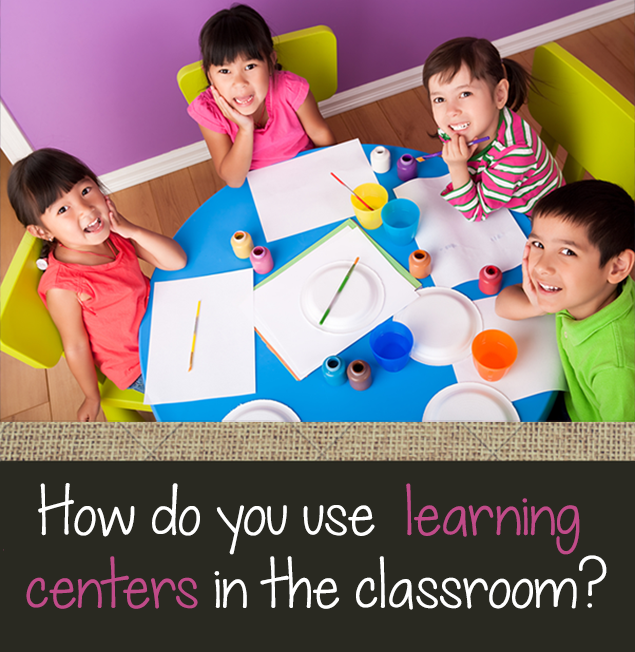How to set up Learning Centers?
Posted by Network Support · Leave a Comment
Create Learning Centers in the classroom to facilitate independent and group oriented learning. These areas for learning activities can bring learning to life and increase student involvement.
How can teachers set up Learning Centers in the classroom?
In recent years, many teachers have begun setting up Learning Centers inside the classroom. Learning Centers can be summed up as small classrooms within a classroom. The centers are spaces set aside within the classroom in which students can engage in self-directed independent or group learning. It is simply, a transformation of an area; for example a corner of the room into a creative easily accessible study area (Learning Center). These spaces are filled with different educational materials and resources that make learning interesting for the students. Thus, instead of restricting learning to a particular region of the classroom, every area is used for stimulating learning. The centers promote both independent and group participation in activities for furthered learning.
Benefits of Learning Centers
Learning Centers help students:
- Learn new information
- Connect new information with previous knowledge
- Practice and master skills or concepts
Students are able to make use of these centers before, during and after a lesson is presented in the class.
Setting up Learning Centers in the classroom
Teachers can set up as many centers as they would like or have room for, but make sure that no two centers are the same. This ensures that these spaces are special and enticing. These centers should be a conscious and efficient use of the space in the classroom. Here are some pointers to help teachers set up Learning Centers in the classroom:
- Number of centers: Have an idea of the number of centers that are needed in the classroom. It is best to name each center from the start to help differentiate between them and to indicate their learning objective.
- Space and location: Consider the entire space of the classroom and decide how the classroom should be arranged. Teachers may need to consider the actual teaching area along with the other spaces, as it is not easy to constantly be rearranging. It is also important to consider easy mobility between the centers, so that students can travel to and from centers without disrupting or disturbing others.
- Furniture: Take inventory of the furniture provided and decide the optimal way of arranging it within the classroom, so as to create a positive and encouraging learning atmosphere. When arranging the furniture, teachers should keep in mind the type of activities that the space will be used for (individual/group) and the nature of the center (reading, writing, etc.).
- Materials and storage: Plan in advance how to procure the needed materials for the space. Does the teacher need to approach the school administrator or request certain items from parents? Another point to consider is the storage. Where and how should the materials at each center be stored for organization and easy access for the students?
Structuring the Learning Center
After considering the physical structure of the Learning Centers, the next step is to plan the centers in the most effective way. Then the centers can stimulate the highest levels of learning in the classroom. Pointers for planning the centers are as follows:
- Grouping students: When placing students into groups it is best to have 3-4 members that are similar in their needs and abilities. Each group can be given a name and color as it allows for easy planning and monitoring.
- Directions: Have clear directions to be followed in each center. These instructions can be displayed where students can easily view, to encourage adherence. The instructions may be open ended to encourage independent learning or specific to accomplish certain learning objectives.
- Scheduling: Have specific time limits for each center or certain times during the day that the centers are open.
- Duration: Have an idea of how long a particular center will be operational. For instance some skill centers may not be useful after students have gained mastery over the particular skill.
- Rotate: For specific group center times create a rotating schedule, a road map or a graphic organizer that gives an order to the student groups and their use of the centers. Have a timer or a buzzer, to signal students to move on to the next center. Students can also be given individual and group check-sheets that let them know which center to precede to next and what all activities need to be completed.
- Activities: Have a variety of alternate learning resources catering to every learning style and need of the students. Every center can have a list or sequence of activities to be completed and choices of free activities which students can perform in their free time.
- Responsibility: Give students some responsibilities such as cleaning up and storing equipment after use to increase tidiness and student ownership of the centers.
Creating Learning Centers in the classroom can add a new dimension to learning than just lectures. These centers encourage students to learn at their own pace, work together in groups, and have fun while learning.
Like this article for teachers?
Browse the Professional Learning Board COURSE CATALOG to find related online courses for teachers in your state. Professional Learning Board is a leading provider of online professional development classes that teachers use to renew a teaching license or renew a teaching certificate.





